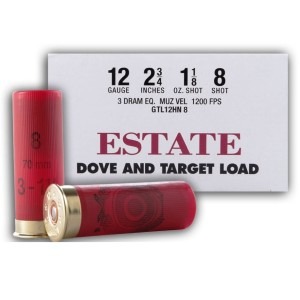What’s ‘Dram Equivalent’ Mean?
Have you tried shooting a shotgun or shotgun sport yet? Many don’t try it because they think shotguns kick like a mule. That’s what rumor gets you, because not only does a shotgun not have to recoil like sledgehammer, it should not.
Modern shotgun technology has incorporated several independent systems to reduce recoil; springs, dampeners, gels and rubber components are regularly used, sometimes in conjunction, to reduce recoil. Of course, the shotgun shell itself has a lot to do with felt recoil. The “secret” to determining the expected recoil and stopping power is printed right on the box.
If you’re lucky, occasionally you’ll stumble upon a box of shotshells that’s labeled “Low Recoil.” But most aren’t, which leads us to the one thing that’s still printed on nearly every box of modern shotshells produced today: Dram Equivalent.

The term “dram equivalent” is a holdover from the days when shotshells were loaded with blackpowder. Blackpowder is (or at least was) measured in “drams.” This is a weight measure, where 16 drams equal one ounce. At that measurement, 256 drams of blackpowder weigh one pound. (Trivia bonus! A pound of blackpowder is actually known as an “avoirdupois pound.”) All of that’s fine and good if you’re shooting a blackpowder shotgun — and that’s not likely. The shotshells you find on your retailer’s shelves today are, of course, loaded with modern smokeless propellents. These gunpowders are much lighter than blackpowder in the same volume, thus, loading a shell with smokeless powder using a black powder weight chart would be akin to shoving a small stick of dynamite in the barrel.
What we end up with them is the term “dram equivalent.” The one word in that term that deserves the focus is “equivalent.” Paired with “dram” this became a way for manufacturers to communicate to shotgunners the power of the charge in the shell. This gives the shooters an idea of how the shell performs — the amount of pressure generated by the smokeless powder compared to the blackpowder for which those first smokeless powder users had so long been accustomed. Those early smokeless shooters understood what 3 ½ drams of blackpowder in their shotgun felt like in terms of recoil and performed in terms of knock-down power. While there are few shotgunners today who know what shooting blackpowder shotshells really feels like, the rating system on boxes of shotshells stuck and is still used today.
In this video, World Champion Target Shooter and Babes with Bullets instructor, Kay Miculek, explains to beginner shooters the differences between various shotgun shell loads and demonstrates shot patterns on paper targets. Miculek describes Dram Equivalent as simply how much gun powder is in the load or cartridge.
The main takeaway you need to remember is the larger the dram equivalent, the larger the powder charge and more force the shell will produce. For instance, most clay target sports mandate that shotshells be no more than “3 Drams Equivalent,” in order to keep noise and the distance shot will travel minimized on public ranges. (Clay target shooters also don’t want a heavy recoiling load, because such heavy loads will fatigue a shooter over a long day’s competition of 100 to 200 rounds of more). Many hunting loads carry dram equivalent markings quite a bit higher than that. Regardless, when you’re armed with the knowledge of what dram equivalents really are, you are better prepared to select the ammunition best suited for your intended shotgunning needs.